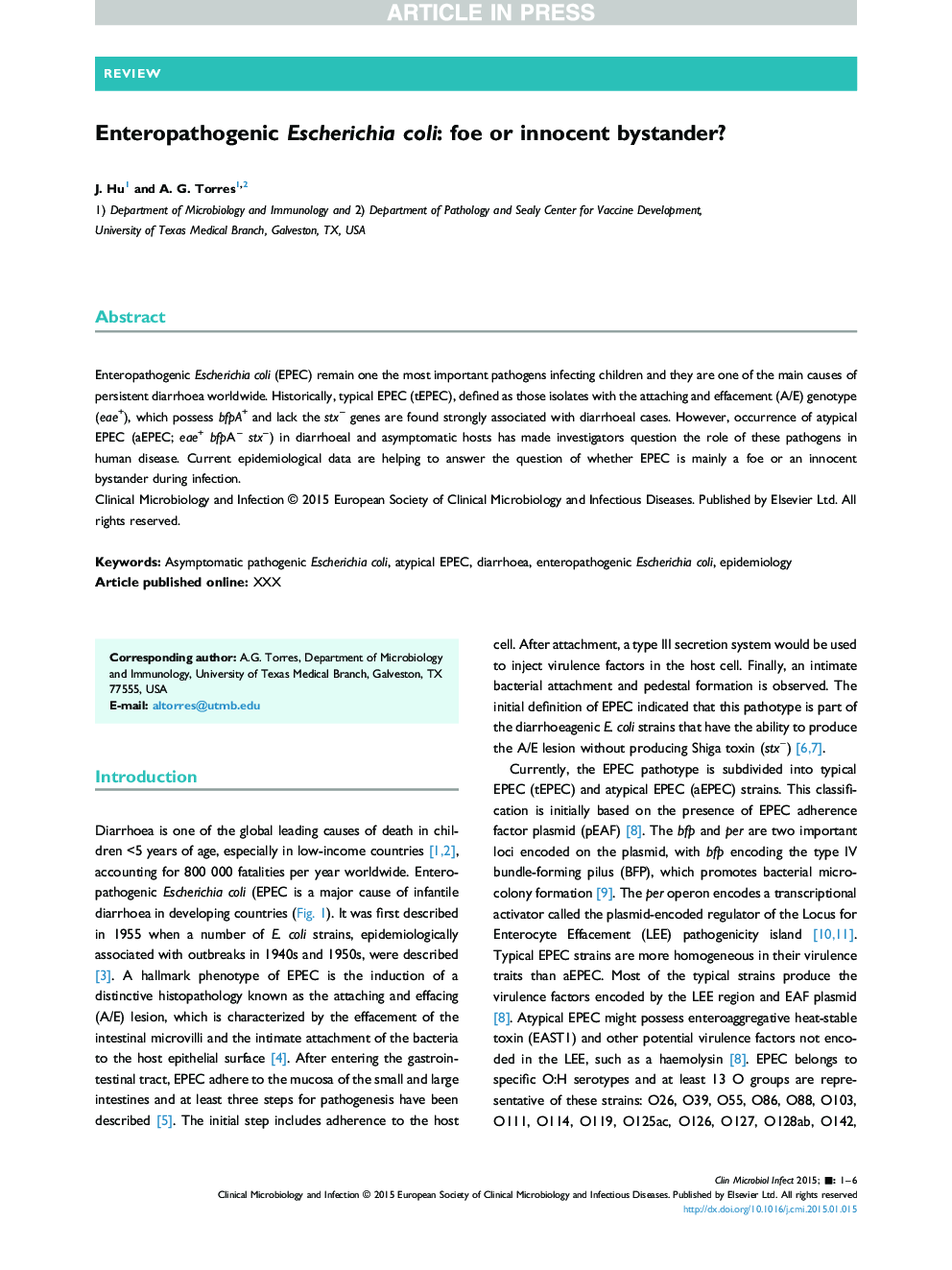| Article ID | Journal | Published Year | Pages | File Type |
|---|---|---|---|---|
| 6129533 | Clinical Microbiology and Infection | 2015 | 6 Pages |
Abstract
Enteropathogenic Escherichia coli (EPEC) remain one the most important pathogens infecting children and they are one of the main causes of persistent diarrhoea worldwide. Historically, typical EPEC (tEPEC), defined as those isolates with the attaching and effacement (A/E) genotype (eae+), which possess bfpA+ and lack the stx- genes are found strongly associated with diarrhoeal cases. However, occurrence of atypical EPEC (aEPEC; eae+bfpA-stx-) in diarrhoeal and asymptomatic hosts has made investigators question the role of these pathogens in human disease. Current epidemiological data are helping to answer the question of whether EPEC is mainly a foe or an innocent bystander during infection.
Related Topics
Life Sciences
Immunology and Microbiology
Microbiology
Authors
J. Hu, A.G. Torres,
